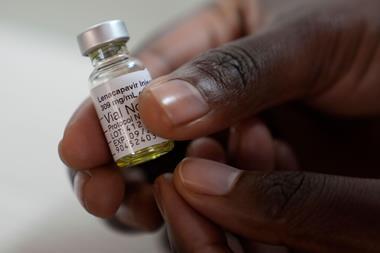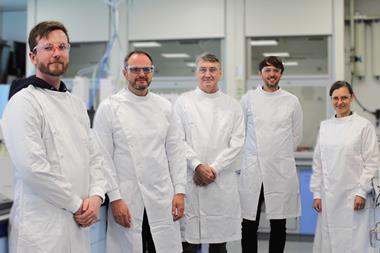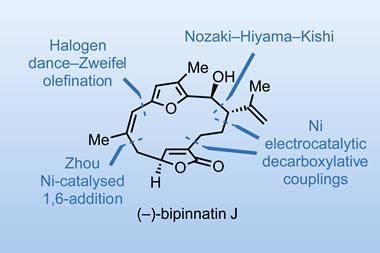Overheard recently in a seminar room near you…

Let me start with a few comments about our medicinal chemistry group that probably apply equally to all of the therapeutic areas below. I have been told at various times over the years that computational methods were becoming so powerful that they were going to lead us directly to drugs. Then I was told that making uncountable zillions of near-random compounds was the way forward. After that, if I have this straight, we went through an era when fanatical attention to molecular weights and logP values was the answer, for sure. But that definitely no longer applies, because for the last couple of years I’m seeing molecules that look like two or three regular-sized drugs held together with strings of yarn. And just recently I’ve had a string of small companies showing up, telling me that computational methods are becoming so powerful that they are going to lead us directly to drugs. All I am saying is that I feel that this is where I got on this ride, and I wish you chemists would find something you like and stick with it.
All right, now for the therapeutic areas, and first we have anti-infectives. I’m well aware that the antiviral group did tremendous work during the recent pandemic. And yes, it is truly not your fault that Pfizer had all those viral protease inhibitors and intermediates sitting in storage, ready to go. I’m sure your drug would have been just as effective and would not have tasted like the bottom of a metal hamster cage, but we’ll never know now, will we? I trust you are all familiar with the words of our founder and first chief executive: ‘What have you done for me lately?’ But our new Health Secretary seems intent on giving everyone in the field something to keep them occupied, and on that subject I would like to suggest to the formulations group that they look into beef tallow as an excipient for future clinical candidates. That might give us a regulatory advantage; you never know.
I realise that it is disorienting to have to adapt to a world in which anti-obesity drugs actually work…
Next, we have the central nervous system group. Let me say up front that I realise that dropping depression and schizophrenia as target diseases was, indeed, hard on many people in this area, but we still have Alzheimer’s. And isn’t having one disease that we are completely baffled by just about the same as having three of them, if you look at it philosophically? And you’ll always have amyloid, right? It’s the target that can’t be killed. If those antibodies that have hit the market turn out to do nothing, I am informed that this will just prove even more that amyloid is the real mechanism. Take your perpetual employment and be happy, is my advice.
There has to be something in oncology between chemical weapons and amazingly selective multi-targeting antibodies, doesn’t there? And no, not another kinase inhibitor…
That brings us to diabetes and metabolism. Now, I realise that it is disorienting to our long-time employees in this area to have to adapt to a world in which anti-obesity drugs actually work. I remind everyone that metabolic disease is the natural homeland of compounds whose effects are real but whose mechanisms are mystical secrets: metformin, for starters. And remember, we barely understand what’s going on with GLP-1 and the other incretins. Every other week there’s a new report of what they might do, so I charge you with adding to the list. Skin care? Allergies? Who knows? For all we know GLP-1 is an antiviral. Get cracking, and file those patents early. What’s that? No, someone’s already had the Alzheimer’s idea – we’re too late on that one.
Next up is oncology. We seem to be in a situation here where most of our candidates do almost nothing for almost every prospective patient, but do almost everything for the remaining three of them. As you know, the board of directors is of the opinion that there are enough orphan diseases out there already, and there is no need for us to discover more of them every time we run a clinical trial. There has to be something in between first world war chemical munition compounds and amazingly selective multi-targeting antibodies, doesn’t there? And no, not another kinase inhibitor – if we want any of those I’m sure that some company in China we’ve never heard of will sell us one. In fact, perhaps that holds for other classes of compound as well. And whole therapeutic areas … hmm … let’s move on, shall we?

















No comments yet